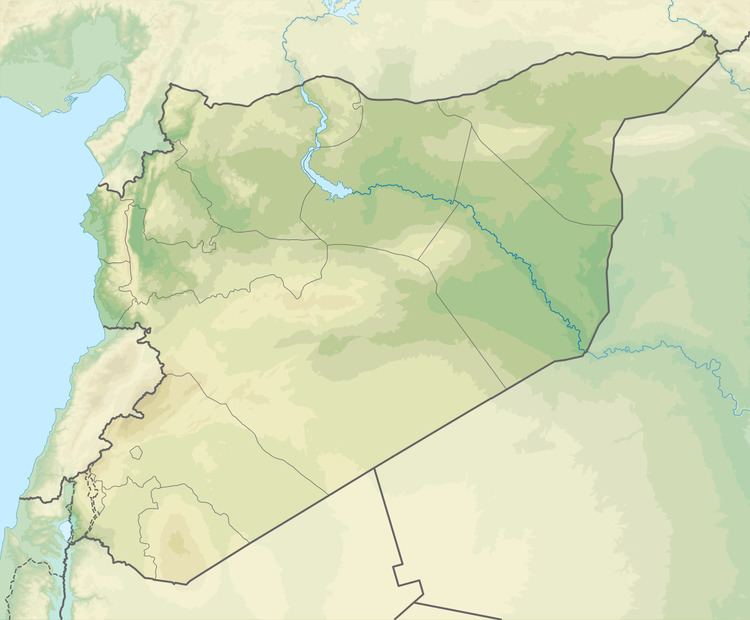Magnitude 7.5 Ms Tsunami yes | Max. intensity XI (Extreme) Casualties ~260,000 | |
 | ||
Date 13 December 0115 (0115-12-13) Areas affected Anatolia, Syria (region) | ||
The 115 Antioch earthquake occurred on 13 December 115 AD. It had an estimated magnitude of 7.5 on the surface wave magnitude scale and an estimated maximum intensity of XI (Extreme) on the Mercalli intensity scale. Antioch and surrounding areas were devastated with a great loss of life and property. It triggered a local tsunami that badly damaged the harbour at Caesarea Maritima. The Roman Emperor Trajan was caught in the earthquake, as was his successor Hadrian. They escaped with only slight injuries and later began a program to rebuild the city.
Contents
Tectonic settingEdit
The site of Antioch lies close to the complex triple junction between the northern end of the Dead Sea Transform, the mainly transform boundary between the African Plate and the Arabian Plate, the southwestern end of the East Anatolian Fault, the mainly transform boundary between the Anatolian Plate and the Arabian Plate, and the northeastern end of the Cyprus Arc, the boundary between the Anatolian and African Plates. The city lies on the Antakya Basin, part of the Amik Basin, filled by Pliocene-to-recent alluvial sediments. The area has been affected by many large earthquakes during the last 2,000 years.
The results of trenching over the northern part of the Dead Sea Transform indicate that three major earthquakes have occurred along the Missyaf segment of the fault since about 100 AD, the earliest of which may correlate with the 115 earthquake.
DamageEdit
An account of the earthquake was included by the writer Cassius Dio in his Roman History. He describes Antioch at that time as crowded with soldiers and many civilians that had travelled from all parts of the empire, because Trajan was wintering there. The earthquake began with a loud roaring sound, followed by intense shaking of the ground. Whole trees were thrown into the air, as were many of the inhabitants, causing great injury. Large numbers of people were killed by falling debris, while many others were trapped. The aftershocks that followed the earthquake for several days killed some of the survivors, while others that were trapped died of hunger. Trajan managed to get clear of the house he was staying in by leaving through a window and only suffered minor injuries. Because of the danger from aftershocks, he moved with his retinue to the open hippodrome.
The city of Apamea was also destroyed by the earthquake and Beirut suffered significant damage. The tsunami triggered by the earthquake affected the Lebanese coast, particularly at Caeserea and Yavneh. The harbour at Caeserea Maritima was probably destroyed by the tsunami, an interpretation based on the dating of a half metre thick tsunami deposit found outside the harbour.
The origin of the reported death toll of 260,000 is uncertain, as it only appears in catalogues of about the last hundred years.
AftermathEdit
The restoration of Antioch was started by Trajan but seems to have been completed by Hadrian. Trajan had a copy of the statue of Tyche by Eutychides erected at the new theatre, to commemorate the rebuilding of the city. Almost all of the mosaics that have been found in Antioch date from after the earthquake.
